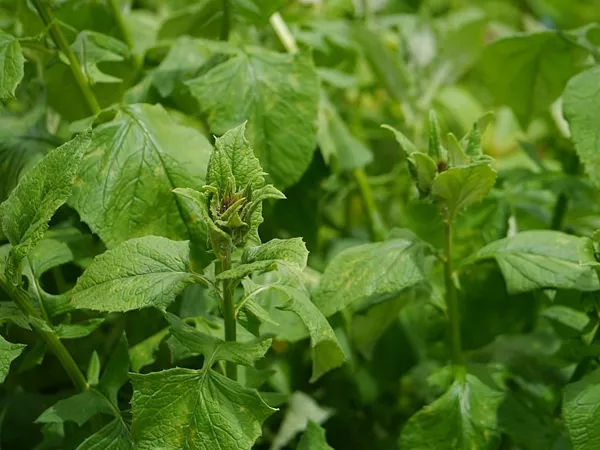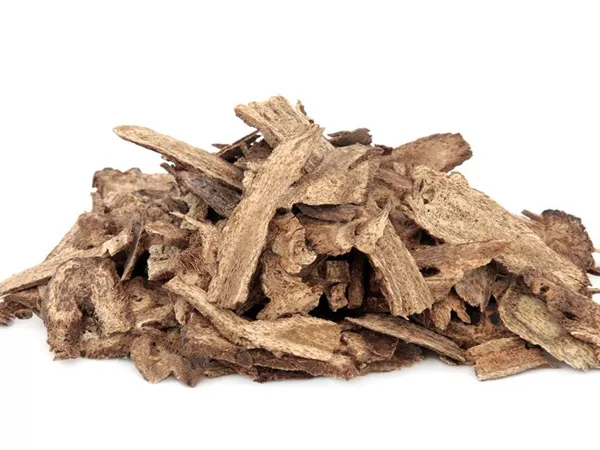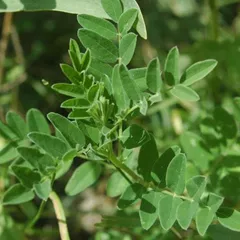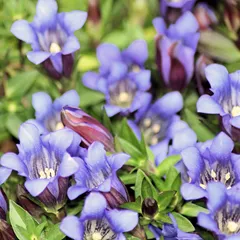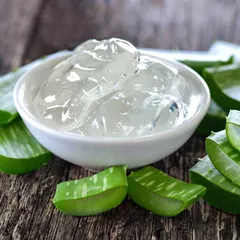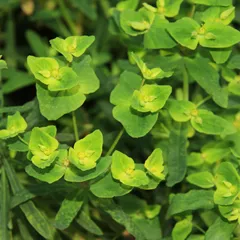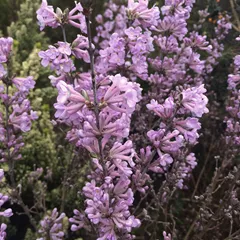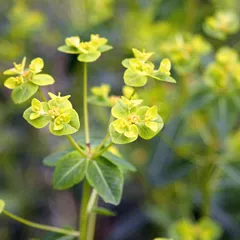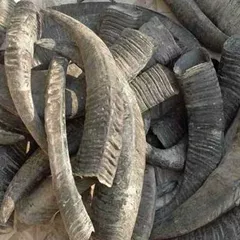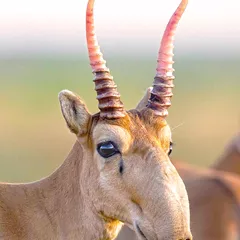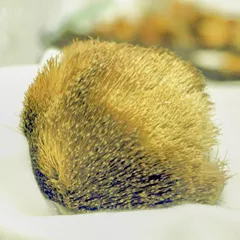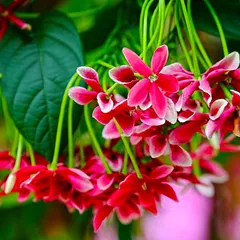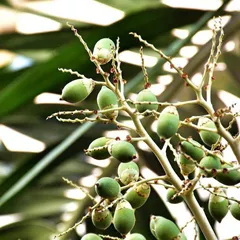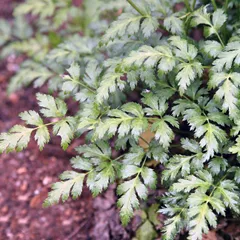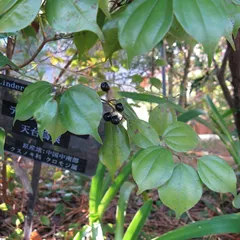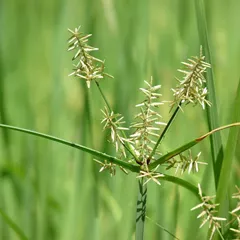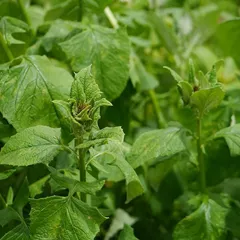Mu Xiang
Mu Xiang
English: Costus roots
Chinese: 木香
Parts used: Dried root
TCM category: Herbs that regulate Qi
TCM nature: Warm
Organ affinity: Gallbladder Large intestine Liver Lung Spleen Stomach
Scientific name: Saussurea costus, Saussurea lappa, Aucklandia lappa
Other names: Kuth
Use of Mu Xiang (costus roots) in TCM
Please note that you should never self-prescribe TCM ingredients. A TCM ingredient is almost never eaten on its own but as part of a formula containing several ingredients that act together. Please consult a professional TCM practitioner, they will be best able to guide you.
Preparation: Remove impurities, wash, cut in thick slices and dry.
Dosage: 3 - 9 grams
Main actions according to TCM*: Relieves the Stagnation of Qi of the digestion in the Spleen, Stomach and Intestines. Relieves Qi Stagnation of the Liver and Gallbladder. Strengthens the Spleen and is used with tonifying herbs to prevent their potential cloying effects.
Primary conditions or symptoms for which Mu Xiang may be prescribed by TCM doctors*: Abdominal pain Abdominal bloating Vomiting Diarrhea
Contraindications*: This herb should not be used by those with Yin and Blood Deficiency.
Common TCM formulas in which Mu Xiang is used*
Gui Pi Tang
Source date: 1529 AD
Number of ingredients: 12 herbs
Formula key actions: Tonifies and nourish Qi and Blood. Tonifies Heart and Spleen.
Conditions targeted*: Nervous exhaustionMyasthenia gravis and others
Mu Xiang is an assistant ingredient in Gui Pi Tang. This means that it either serves to reinforces the effect of other ingredients or it moderates their toxicity.
In Gui Pi Tang, Mu Xiang regulates the Qi and revives the Spleen. It is especially effective in this when combined with Atractylodes rhizome (Bai Zhu), which is one of the key herbs in this formula.
Its use also prevents indigestion due to the rich, cloying properties of the other herbs.
Dang Gui Long Hui Wan
Source date: 1172 AD
Number of ingredients: 11 herbs
Formula key actions: Drains Liver and Gallbladder Fire Excess.
Conditions targeted*: VertigoTinnitus and others
Mu Xiang is an assistant ingredient in Dang Gui Long Hui Wan. This means that it either serves to reinforces the effect of other ingredients or it moderates their toxicity.
In Dang Gui Long Hui Wan, Mu Xiang ensures that the bitter nature of the formula does not lead to a breakdown of the Qi dynamic; it adds regulation of the Qi to the draining of Fire.
Zhou Che Wan
Source date: 992 AD
Number of ingredients: 10 herbs
Formula key actions: Promotes Qi movement. Harshly drives out Water and Heat Stagnation.
Conditions targeted*: SchistosomiasisUremia and others
Mu Xiang is an assistant ingredient in Zhou Che Wan. This means that it either serves to reinforces the effect of other ingredients or it moderates their toxicity.
In Zhou Che Wan, Mu Xiang removes Qi Stagnation in the Triple Burners.
Zi Xue Dan
Source date: 752 AD
Number of ingredients: 17 herbs
Formula key actions: Clears Heat. Opens the sensory orifices. Controls spasms and convulsions. Extinguishes Wind.
Conditions targeted*: Acute encephalitisAcute meningitis and others
Mu Xiang is an assistant ingredient in Zi Xue Dan. This means that it either serves to reinforces the effect of other ingredients or it moderates their toxicity.
In Zi Xue Dan, Mu Xiang promotes the Qi movement and assist Musk in opening the orifices.
Fei Er Wan
Source date: 1156 AD
Number of ingredients: 8 herbs
Formula key actions: Kills parasites. Reduces accumulation. Strengthens the Spleen. Clears Heat.
Conditions targeted*: AscariasisHookworm and others
Mu Xiang is an assistant ingredient in Fei Er Wan. This means that it either serves to reinforces the effect of other ingredients or it moderates their toxicity.
In Fei Er Wan, Mu Xiang promotes the Qi movement in the Middle Burner.
Shao Yao Tang
Source date: 1186 AD
Number of ingredients: 9 herbs
Formula key actions: Regulates and harmonizes the Qi and Blood. Clears Heat. Dries dampness. Resolves Toxicity.
Conditions targeted*: Acute enteritisUlcerative colitis and others
Mu Xiang is an assistant ingredient in Shao Yao Tang. This means that it either serves to reinforces the effect of other ingredients or it moderates their toxicity.
In Shao Yao Tang, Mu Xiang promotes the movement of Qi and help eliminate Stagnation. Together with Areca nut, it complements the actions of White peony root and Dong quai, whose focus is to regulate the Blood.
Wu Yao Tang
Source date: 1336 AD
Number of ingredients: 9 herbs
Formula key actions: Pacifies the Liver. Moves Qi. Stops pain. Nourishes Liver Blood. Eliminates Stagnation.
Conditions targeted*: Chronic pelvic inflammatory disease and others
In Wu Yao Tang, Mu Xiang is bitter and acrid. It promotes the movement of Qi and stops pain. It focuses on the Qi dynamic of the Middle Burner, the Spleen and the Stomach, because of its focal role in the ascent and descent of Qi.
Together with Sha Ren, it reduces distention and alleviates pain while also strengthening the Spleen. Because Qi moves not just the Blood but also the Body Fluids, Qi Stagnation is widely accompanied by Dampness and water accumulation. This conjunction of symptoms, often found in premenstrual syndrome, is effectively addressed by this combination of herbs.
Xiang Sha Liu Jun Zi Tang
Source date: 1675 AD
Number of ingredients: 9 herbs
Formula key actions: Tonifies Spleen and Stomach Qi. Removes Dampness. Moves Qi. Alleviates pain.
In Xiang Sha Liu Jun Zi Tang, Mu Xiang moves Qi and eliminates Stagnation in the epigastrium
Xiang Sha Yang Wei Wan
Source date: 1587 AD
Number of ingredients: 13 herbs
Formula key actions: Strengthens and harmonizes the Spleen and Stomach. Resolves Dampness.
Conditions targeted*: Poor appetiteLoss of taste and others
In Xiang Sha Yang Wei Wan, Mu Xiang circulates Qi in the Middle Burner, as well as remove Dampness. It also warms the Middle and stops pain.
Key TCM concepts behind Mu Xiang's properties
In Traditional Chinese Medicine (TCM), Mu Xiang belongs to the 'Herbs that regulate Qi' category. Herbs in this category typically treat a TCM condition called 'Qi Stagnation'. Concretely it means that Qi is blocked in the body's Organs and Meridians, most typically the Stomach, Liver, and to a lesser extent, the Lungs. In modern medicine terms, Qi Stagnation often translates into psychological consequences such as depression, irritability or mood swings. It's also frequently associated with conditions such as premenstrual syndrome (PMS), menopausal symptoms, the development of breast swellings as well as various digestive disorders.
Furthermore Mu Xiang is Warm in nature. This means that Mu Xiang tends to help people who have too much 'Cold' in their body, although with less effect than a plant that would be Hot in nature. Balance between Yin and Yang is a key health concept in TCM. Those who have too much Cold in their body are said to either have a Yin Excess (because Yin is Cold in nature) or a Yang Deficiency (Yang is Hot in Nature). Depending on your condition Mu Xiang can help restore a harmonious balance between Yin and Yang.
Mu Xiang also tastes Bitter and Pungent. The so-called 'Five Phases' theory in Chinese Medicine states that the taste of TCM ingredients is a key determinant of their action in the body. Bitter ingredients like Mu Xiang tends to have a cleansing action on the body by clearing Heat, drying Dampness and promoting elimination via urination or bowel movements. On the other hand Pungent ingredients tend to promote the circulations of Qi and Body Fluids. That's why for instance someone tends to sweat a lot when they eat spicy/pungent food.
The tastes of ingredients in TCM also determine what Organs and Meridians they target. As such Mu Xiang is thought to target the Gallbladder, the Large intestine, the Liver, the Lung, the Spleen and the Stomach. Similar to modern medicine, in TCM the Gallbladder stores and releases bile produced by the Liver. It also controls the emotion of decisiveness. The Large Intestine on the other hand receives the "impure" parts of the digested food from the Small Intestine, absorbs the remaining fluids and excrete the remainder as feces. The Liver is often referred as the body's "general" because it is in charge of regulating the movements of Qi and the Body Fluids. It also takes a leading role in balancing our emotions. In addition to performing respiration, the Lungs are thought in TCM to be a key part of the production chain for Qi and the Body Fluids that nourish the body. The Spleen assists with digestion, Blood coagulation and Fluids metabolism in the body. The Stomach is responsible for receiving and ripening ingested food and fluids. It is also tasked with descending the digested elements downwards to the Small Intestine.
Research on Mu Xiang
Different pharmacological experiments in a number of in vitro and in vivo models have convincingly demonstrated the ability of Saussurea costus to exhibit anti-inflammatory, anti-ulcer, anticancer and hepatoprotective activities, lending support to the rationale behind several of its traditional uses.1
Sources:
1. Madan Mohan Pandey, Subha Rastogi, Ajay Kumar Singh Rawat (2007). Saussurea costus: Botanical, chemical and pharmacological review of an ayurvedic medicinal plant. Journal of Ethnopharmacology, 110(3): 379-390. DOI: https://doi.org/10.1016/j.jep.2006.12.033.

